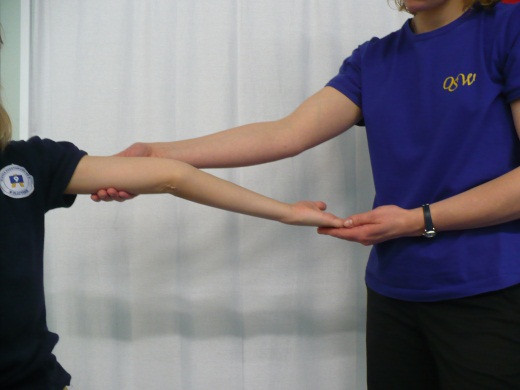Joint Hypermobility: increased risk for injury in sport?

Health care practitioners in the sports medicine community are constantly seeking ways to evaluate athletes for injury risk and mitigate the risk if possible. Hypermobility as a risk for sustaining injury in sport has been controversial due to conflicting scientific evidence and skepticism regarding unsubstantiated historical opinions. Currently most sports medicine practitioners, although well aware of the theoretical link between hypermobility and musculoskeletal injury, do not include any testing for hypermobility in their usual in office physical examination or pre season evaluation of athletes. Is it time to get off the fence and be more proactive when it comes to hypermobility?
Generalized joint hypermobility is a feature of several disorders of connective tissue that results in joint laxity. This joint laxity is generally considered to be genetic in origin, in other words you were born with it! Hypermobile individuals are commonly reported to suffer dislocations (ie. shoulder), subluxations (ie. rib) and ligament or capsule sprains. However it is important to note that many patients with hypermobility do not have musculoskeletal pain or any other correlated health concern. The question is: do these injuries (dislocations, subluxations, sprains, cartilage injuries etc) occur more frequently or with greater severity in those with hypermobility vs. those without?
Two recent pieces of literature from The American Journal of Sports Medicine might help answer said question.
A 2010 systematic review1 found that subjects categorized as hypermobile were at a significantly increased risk for sustaining knee injuries, but not ankle injuries, compared to their non-hypermobile peers. The knee relies on passive restraint (ligament and capsule) to a greater extent than the ankle, which has a much greater active tissue (musculotendinous) dependence for stability.
A more recent study on 54 professional soccer players2 demonstrated that those players with a Beighton scale (see video below) score of 4 or higher had a higher incidence of injuries (no restriction on type or location of injury) over the course of a season. These hypermobile soccer players were also more likely to experience a re-injury and more likely to sustain a severe injury compared to the non-hypermobile players, which overall resulted in increased lost time from practicing and match play.
As is often the case, there is still much left unknown on this topic. However I believe it is prudent for practitioners and athletes to start putting generalized hypermobility on our injury risk radar with more routine screening (it takes less than a minute…see below!).
Beighton Scale
There are several tools used to quantify hypermobility, however, the Beighton scale is easy to implement, with no elaborate equipment or technology involved, and is validated for clinical and research use. Check out the video below to see the 5 tests utilized to conduct the Beighton scale and the criteria to determine a score from 0-9. The cut-off point for hypermobility has been reported as 4/9 or 5/9 depending on the source. Some others have defined a score of 2-3/9 as mildly hypermobile, 4-5/9 as moderately hypermobile and 6+/9 as severely hypermobile. In general, the higher your score the greater degree of generalized joint laxity. What is your Beighton score?
References:
1. Pacey et al. Generalized joint hypermobility and risk of lower limb joint injury during sport: a systematic review with meta-analysis. American Journal of Sports Medicine. 2010;38(7):1487-1497.
2. Konopinski et al. The effect of hypermobility on the incidence of injuries in elite-level professional soccer players: a cohort study. American Journal of Sports Medicine. 2012:40(4):763-769.
